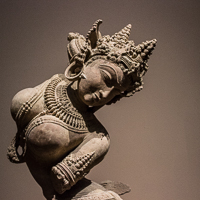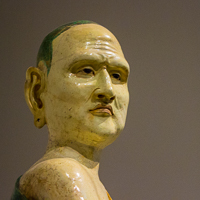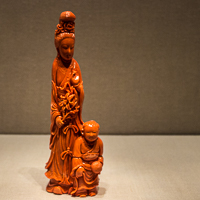
About the Collection
To dedicate just one small gallery to every distinct culture and region and period and dynasty of Asia would overwhelm the entire museum. Asia is too large and too rich in history to visit every contributing culture. Nevertheless, the Met’s Asian Art collection does its bests to cover the major themes. It features the big regions: Chinese, Japanese, and Korean collections span millennia. But the department also contains representative works from smaller (and often more interesting) regions: the variety of Southeast Asian countries, regions in the Indian subcontinent and Sri Lanka. The collection is at once varied and consistent, allowing you to trace religious an historical movements across the continent.

What You Will See
Breath more than depth is the strength of the Asian collection There is a conspicuous effort to represent everyone, but some collections are more thorough than others. Like Western art, religion is a consistent topic and statues dedicated to Buddhist and Hindu figures, both grand and tiny, are featured prominently throughout the galleries. But everyday items are present as well--gorgeous pottery, intricate jewelry, and impressive tapestries round out the collection. While the department is dominated by centuries-old pieces, modern and contemporary works are scattered throughout the galleries and worth discovering. The period rooms and courtyards, particularly Astor Court (one of the most serene places in Manhattan) are well-worth navigating the maze of galleries to find.

Why You Should Go
Asian Art at the Met is not as iconic as the Greek, Egyptian or European galleries, yet rivals those collections in scope and grandeur. And given how few other museums focus on Asian Art, the Met’s Asian collection offers a more rare and unique opportunity: few places in the city or the world allow you to compare and contrast the differences, both glaring and subtle, between the various cultures and artistic traditions of Asia. And while most visitors arrive at the Met with exposure to the history of Rome or the European Renaissance, some of the galleries in the Asian wing present entirely new cultures or religions or artistic styles to visitors. You are guaranteed to see something you have not seen before in the Asian Art gallery.




